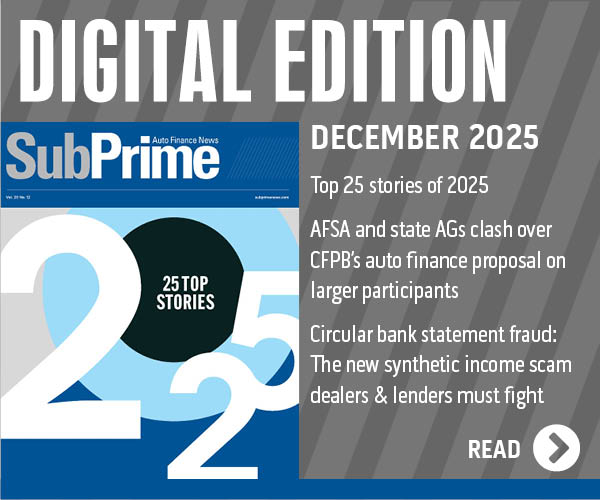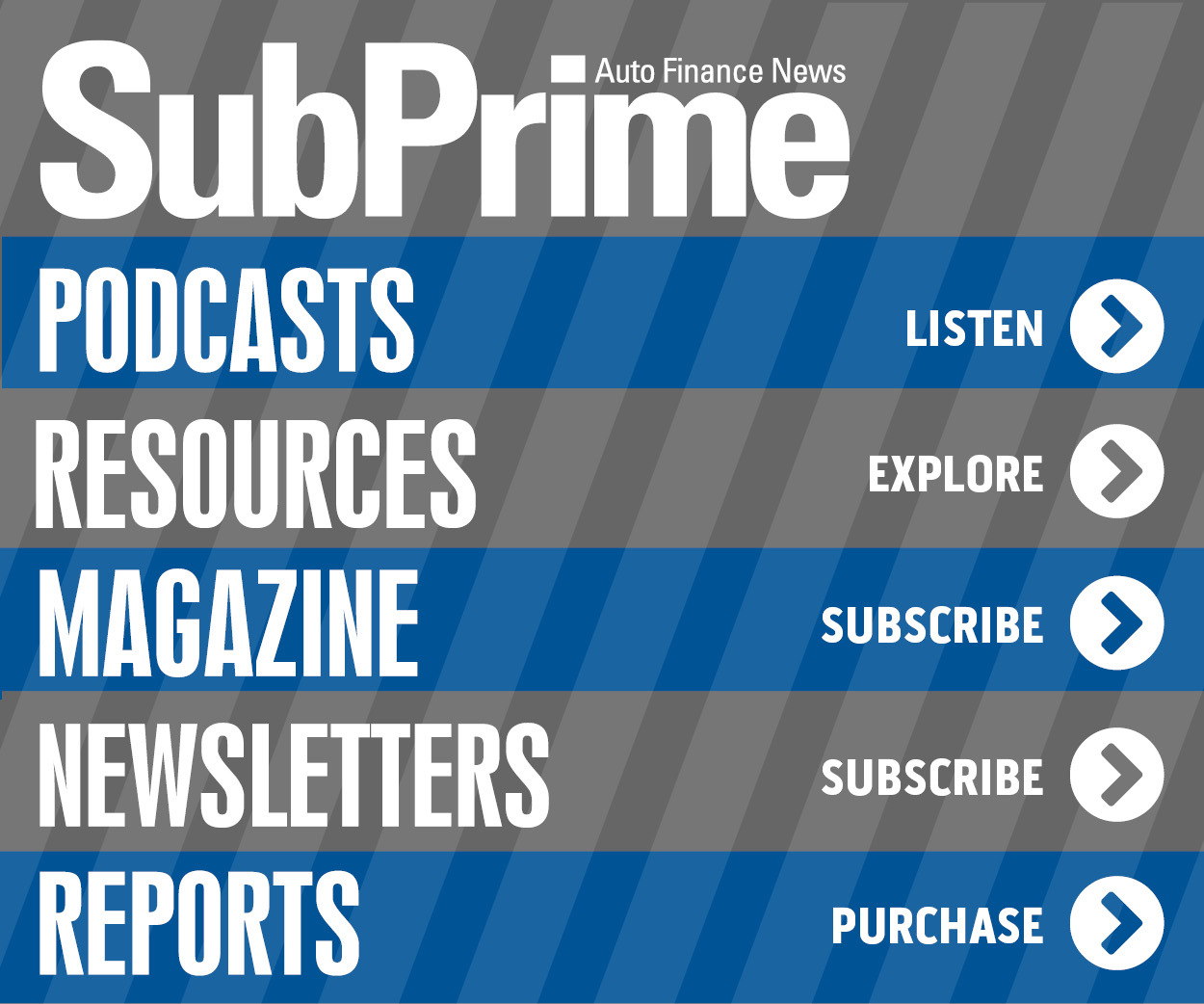Consumer sentiment seems to be rebounding, but struggles to maintain payments remain

By subscribing, you agree to receive communications from Auto Remarketing and our partners in accordance with our Privacy Policy. We may share your information with select partners and sponsors who may contact you about their products and services. You may unsubscribe at any time.
Cox Automotive reported unique credit applications per dealer using Dealertrack ticked up 2% year-over-year last week.
So, does that mean consumers feel more comfortable pushing forward with a financing commitment and taking vehicle delivery?
It depends on which reading of consumer confidence you examine. A new survey by digital personal finance company Achieve showed plenty of negative sentiments, but the Conference Board’s Consumer Confidence Index made a notable jump this month.
“The consumer has not thrown in the towel and appears to be feeling better about the future,” Cox Automotive chief economist Jonathan Smoke said in his weekly analysis, also noting the correlation between sentiment and gas prices remains strong, with recent declines in fuel costs likely contributing to improved outlooks.
Before Memorial Day weekend, AAA reported the average price for a gallon of gas nationwide was $3.19. Gas prices hadn’t been this low over Memorial Day since 2021 when the national average was $3.04.
“Supply and demand are playing a role in this year’s lower pump prices as crude oil supply is currently surpassing demand,” AAA said.
Perhaps, the current status at the gas station is fueling consumer thinking.
Subscribe to Auto Remarketing to stay informed and stay ahead.
By subscribing, you agree to receive communications from Auto Remarketing and our partners in accordance with our Privacy Policy. We may share your information with select partners and sponsors who may contact you about their products and services. You may unsubscribe at any time.
On Tuesday, the Conference Board reported its Consumer Confidence Index increased by 12.3 points in May to 98.0, up from 85.7 in April.
The Present Situation Index — based on consumers’ assessment of current business and labor market conditions — rose 4.8 points to 135.9.
The Expectations Index — based on consumers’ short-term outlook for income, business, and labor market conditions — surged 17.4 points to 72.8, but remained below the threshold of 80, which typically signals a recession ahead.
The Conference Board pointed out that about half of the responses were collected after the May 12 announcement of a pause on some tariffs on imports from China.
“Consumer confidence improved in May after five consecutive months of decline,” said Stephanie Guichard, senior economist, global indicators at the Conference Board. “The rebound was already visible before the May 12 U.S.-China trade deal but gained momentum afterwards. The monthly improvement was largely driven by consumer expectations as all three components of the Expectations Index — business conditions, employment prospects, and future income — rose from their April lows.
“Consumers were less pessimistic about business conditions and job availability over the next six months and regained optimism about future income prospects,” Guichard continued in a news release. “Consumers’ assessments of the present situation also improved. However, while consumers were more positive about current business conditions than last month, their appraisal of current job availability weakened for the fifth consecutive month.”
Analysts indicated May’s rebound in confidence was broad-based across all age groups and all income groups. They noted the improvement was also shared across all political affiliations, with the strongest improvements among Republicans.
However, on a six-month moving average basis, confidence in all age and income groups was still down due to previous monthly declines, according to the Conference Board.
Guichard added: “With the stock market continuing to recover in May, consumers’ outlook on stock prices improved, with 44% expecting stock prices to increase over the next 12 months (up from 37.6% in April) and 37.7% expecting stock prices to decline (down from 47.2% in April). This was one of the survey questions with the strongest improvement after the May 12 trade deal.”
Analysts also mentioned write-in responses on what topics are affecting views of the economy revealed that tariffs are still on top of consumers’ minds.
Notably, the Conference Board found consumers continued to express concerns about tariffs increasing prices and having negative impacts on the economy, but some also expressed hopes that the announced and future trade deals could support economic activity.
While inflation and high prices remained an important concern for consumers in May, analysts noticed there were also some mentions of easing inflation and lower gas prices.
In a special question, consumers were asked if they changed their spending and financial behavior recently.
The Conference Board found that more than a third (36.7%) said they put money aside for future spending. Around a quarter of consumers dug into their savings to pay for goods and services (26.6%) and postponed major purchases (26%).
However, analysts pointed out there were notable differences between income groups: Consumers in households making over $125,000 were more likely to say that they saved money while less wealthy households were more likely to have dug into their savings or postponed purchases.
In addition, only 19% indicated having advanced purchases ahead of tariffs, but that share was higher for consumers in wealthier households (26%), according to the Conference Board.
This month’s survey also asked consumers how worried they were about being laid off, not being able to afford necessities, and not being able to afford desired goods and services.
Overall, analysts said consumers were more anxious about affordability than job security: Nearly half of consumers said they were concerned about not being able to buy the things they need or want, compared to less than a quarter worried about losing their jobs.
Where more consumer pessimism is
Meanwhile, a report distributed earlier in May based on data collected this spring showed much a different perspective about how consumers are doing.
A new survey by digital personal finance company Achieve revealed a gap between consumers’ financial expectations and their economic reality.
While 57% of respondents believed their finances were poised for improvement over the past year, only 32% of American households actually realized those expected gains.
“This reversal of fortunes underscores the fragility of household budgets as broad cost pressures from inflation, high interest rates and now, tariffs, push more consumers into relying on debt to make ends meet,” Achieve said in another news release.
Achieve’s April survey found 33% of consumers said their financial situation deteriorated over the past year — a stark contrast from the 10% who predicted a decline in Achieve’s inaugural survey in spring 2024.
“Households enter 2025 more pessimistic and with fewer financial gains in hand than most were expecting,” Achieve co‑founder and co‑ceo Brad Stroh said. “The optimism gap is a warning sign that highlights the need for tools and strategies that address the financial strain facing households. The reality of high debt loads, high interest costs and persistent inflation cast a sustained shadow on the financial optimism for many Americans.”
The latest edition of Achieve’s study, conducted by Achieve’s think tank, the Achieve Center for Consumer Insights, highlighted some of the risks that persistent reliance on debt poses for many consumers, including:
—25% of respondents accrued more debt over the past three months, nearly level from Achieve’s Q1 2025 study. Meanwhile, 40% said their total debt remained flat and 35% decreased their debt (approximately level from last quarter).
—58% of those surveyed use credit card debt to cover essential expenses. Two out of every five of these respondents have had this debt for more than six months.
—37% say it’s difficult to pay their debts on time, up slightly from 36% last quarter.
—59% report paying all of their bills on time, down from 65% during Q1 and 61% in 2Q24, the inaugural edition of Achieve’s study.
Consumers are increasingly at risk of being late or missing debt and monthly bill payments, Achieve’s survey found.
Consumers reported a higher risk of missing a payment in the next three months on nearly all of the monthly obligations covered in the survey.
In Q2, the survey showed missed payment risk on student loans increased to 35% (up from 32% last quarter), while even secured debts like auto loans (14%) and mortgages (10%) are at greater risk of a late or missed payment, the survey found.
“When people are squeezed by debt levels and ongoing bills, their stress level rises,” Stroh said. “Our data shows that even small income disruptions or timing mismatches can lead to late payments and these challenges are magnified by higher borrowing costs that make it more costly to carry debt balances.”
Among respondents whose debt increased over the past three months, one in three (33%) pointed to difficulty making ends meet without borrowing, 28% cited employment and income challenges and 21% acknowledged falling victim to general overspending. Healthcare costs and other medical issues remain a key challenge, with 16% of respondents attributing their debt to these expenses.
|
Consumers who expect to miss or be late on a loan or bill payment in the next three months |
|||||
|
Debt Type |
2Q24 |
3Q24 |
4Q24 |
1Q25 |
2Q25 |
|
Student loan |
29 % |
28 % |
38 % |
32 % |
35 % |
|
Personal loan |
18 % |
15 % |
18 % |
20 % |
17 % |
|
Auto loan |
10 % |
12 % |
11 % |
7 % |
14 % |
|
Utilities |
11 % |
12 % |
12 % |
11 % |
13 % |
|
Cable/internet |
9 % |
10 % |
11 % |
10 % |
13 % |
|
Credit card |
11 % |
13 % |
12 % |
13 % |
13 % |
|
Buy now, pay later |
13 % |
19 % |
13 % |
17 % |
13 % |
|
Mortgage/rent |
8 % |
9 % |
9 % |
7 % |
10 % |
|
Mobile phone |
7 % |
9 % |
10 % |
8 % |
10 % |
|
Car insurance |
7 % |
7 % |
7 % |
7 % |
9 % |
|
Homeowners/renters insurance |
8 % |
8 % |
7 % |
5 % |
8 % |
|
Q: What will you do to stay current with your bills over the next three months? Sample ranges from 1,460-2,000 and varies by quarter and number of respondents within each category of bill payment. Source: Achieve Center for Consumer Insights |
|||||


